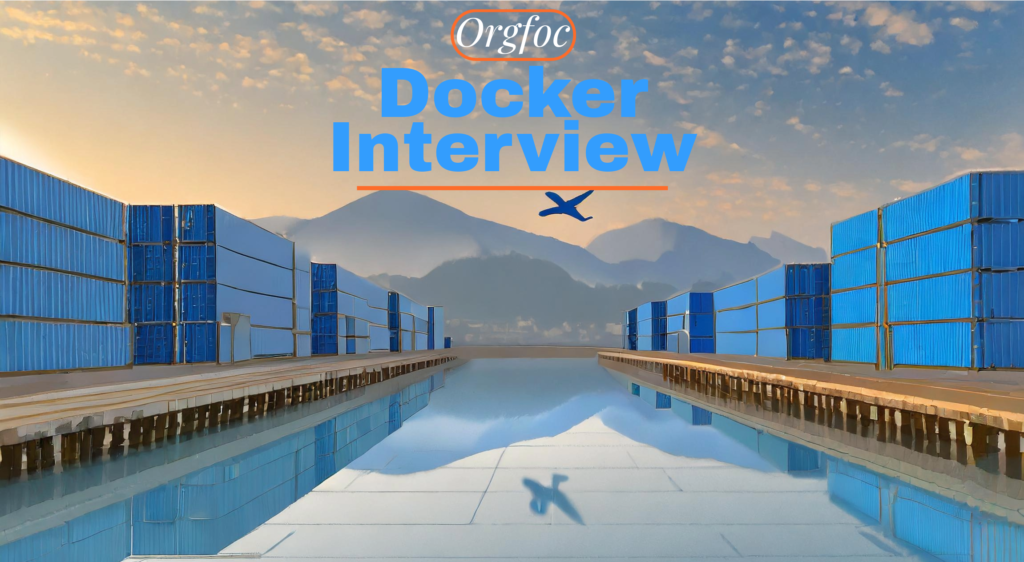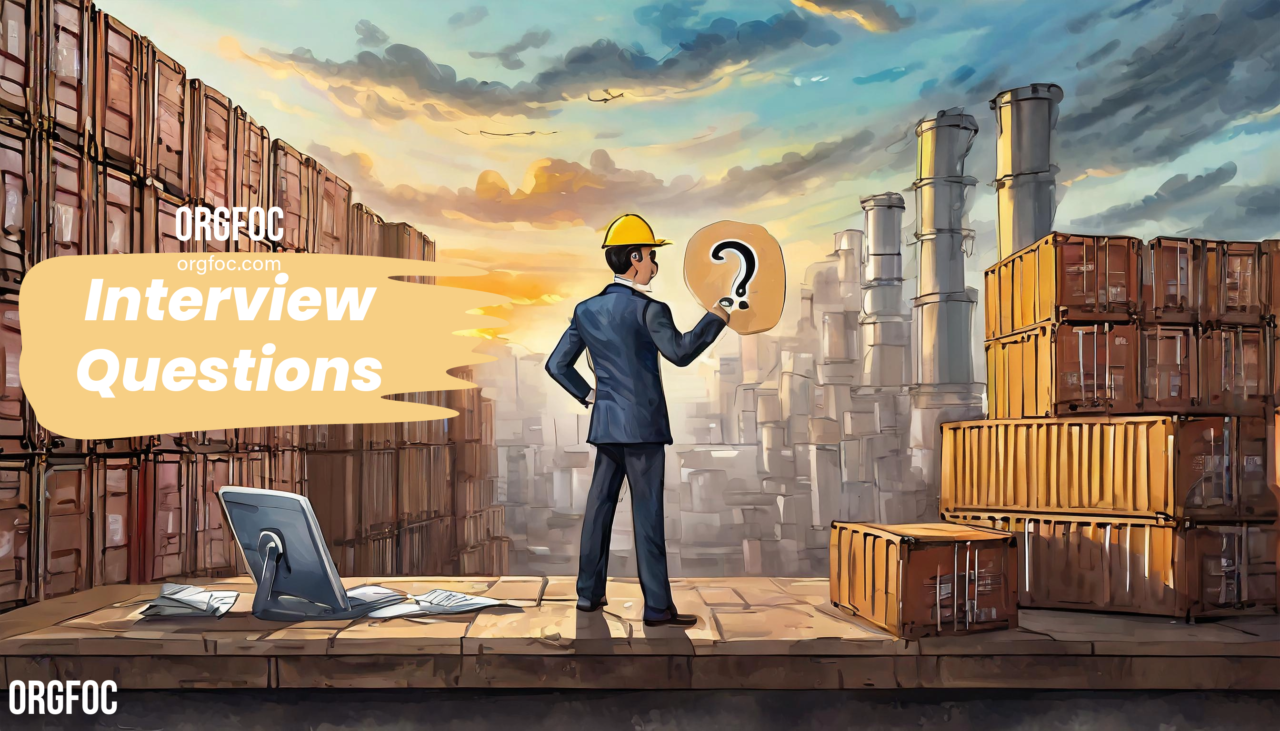Introduction: In recent years, Docker has revolutionized the way we build, ship, and run applications. Its containerization technology has become a cornerstone of modern software development, offering a flexible and efficient approach to deploying applications across different environments. In this blog post, we’ll explore what Docker is, how it works, its benefits, and common docker interview questions you might encounter when discussing Docker in job interviews.
Part 1: Understanding Docker
What is Docker?
Docker is an open-source platform for developing, shipping, and running applications. It utilizes containerization technology to package applications and their dependencies into standardized units called containers. These containers provide an isolated environment for running applications, ensuring consistency and portability across different environments. Here is my dedicated docker post that discuss the docker in detail.
How does Docker work?
At the heart of Docker is the Docker Engine, which consists of a daemon process, REST API, and CLI tools. The Docker Engine runs and manages Docker containers on a host machine, allowing developers to create, deploy, and manage containerized applications. Here are some key terms in docker that can be considered as docker interview questions itself.
Key Concepts/Terms in Docker
Container: A lightweight, standalone, and executable software package that includes everything needed to run an application, such as code, runtime, libraries, and dependencies.
Image: A read-only template that contains the instructions for creating a Docker container. Images are built from a Dockerfile, which specifies the configuration and dependencies of the application.
Dockerfile: A text file that contains a set of instructions for building a Docker image. It defines the environment and setup required for the application to run.
Docker Engine: The core component of Docker that runs and manages Docker containers on a host machine. It includes a daemon process, REST API, and CLI tools for interacting with Docker.
Docker Hub: A public registry for Docker images, where developers can store, share, and discover containerized applications and services.
Docker Compose: A tool for defining and running multi-container Docker applications. It uses a YAML file to configure the services, networks, and volumes required for the application.
Benefits of Docker
Consistency: Docker ensures consistency in environments, allowing developers to build, test, and deploy applications consistently across different environments.
Portability: Docker containers are lightweight and portable, making it easy to deploy applications on different platforms and cloud providers.
Efficiency: Docker improves resource utilization and scalability by isolating applications into containers and running them on a shared infrastructure.
Flexibility: Docker enables microservices architecture, allowing developers to modularize and scale applications more efficiently.
Part 2: Docker Interview Questions

- What is Docker, and how does it differ from virtualization?
- What are the benefits of using Docker?
- Explain the difference between a Docker image and a Docker container.
- What is a Dockerfile, and how is it used?
- How do you share Docker images with others?
- What is Docker Compose, and how is it used?
- Explain how Docker containers communicate with each other.
- What is the difference between Docker volumes and bind mounts?
- How do you monitor Docker containers in production?
- What are some best practices for Docker security?
What is Docker, and how does it differ from virtualization?
Docker is a platform for developing, shipping, and running applications using containerization technology. Unlike traditional virtualization, which runs multiple virtual machines on a host operating system, Docker containers share the host OS kernel and are more lightweight and portable.
What are the benefits of using Docker?
Benefits include consistency in environments, faster deployment times, improved scalability, resource efficiency, and easier collaboration between developers and operations teams.
Explain the difference between a Docker image and a Docker container.
A Docker image is a read-only template used to create Docker containers, while a Docker container is a running instance of an image. Images define the application and its dependencies, while containers are isolated environments where the application runs.
What is a Dockerfile, and how is it used?
A Dockerfile is a text file that contains a set of instructions for building a Docker image. It specifies the base image, environment variables, commands, and dependencies required to create the image.
Docker images can be shared by pushing them to a Docker registry, such as Docker Hub, and then pulling them from the registry on other machines. Alternatively, images can be saved to a file using the docker save command and then transferred to another machine using a file transfer mechanism.
What is Docker Compose, and how is it used?
Docker Compose is a tool for defining and running multi-container Docker applications. It uses a YAML file (docker-compose.yml) to configure the services, networks, and volumes required for the application. Docker Compose simplifies the management of complex applications with multiple containers.
Explain how Docker containers communicate with each other.
Docker containers can communicate with each other using networking. By default, containers are connected to a bridge network created by Docker, allowing them to communicate with other containers on the same network. Containers can also be connected to custom networks for more advanced networking configurations.
What is the difference between Docker volumes and bind mounts?
Docker volumes are managed storage components that persist data independent of the container’s lifecycle, while bind mounts are paths on the host machine that are mounted into a container. Volumes are preferred for persisting data between container restarts, while bind mounts provide direct access to files on the host filesystem.
How do you monitor Docker containers in production?
Docker provides built-in monitoring tools, such as Docker Stats and Docker Events, for monitoring container resource usage and events. Additionally, third-party monitoring solutions and container orchestration platforms, such as Kubernetes and Docker Swarm, offer advanced monitoring capabilities for Docker containers in production environments.
What are some best practices for Docker security?
Best practices include using official Docker images from trusted sources, minimizing the attack surface by only installing necessary dependencies, regularly updating Docker images and containers, implementing container isolation using user namespaces and seccomp profiles, and monitoring container activity for suspicious behavior.
I have posted some other detailed docker interview questions on the medium.com as well check it out here. https://medium.com/@aman2talk/introduction-to-docker-automate-deployment-and-management-of-applications-using-containerization-03b20281b5b5
Conclusion: In conclusion, Docker has transformed the way we build, ship, and run applications, offering a flexible and efficient approach to containerization. By understanding the key concepts of Docker and being familiar with common docker interview questions, you can effectively leverage Docker in your development workflow and excel in Docker-related job interviews.


Leave a Reply